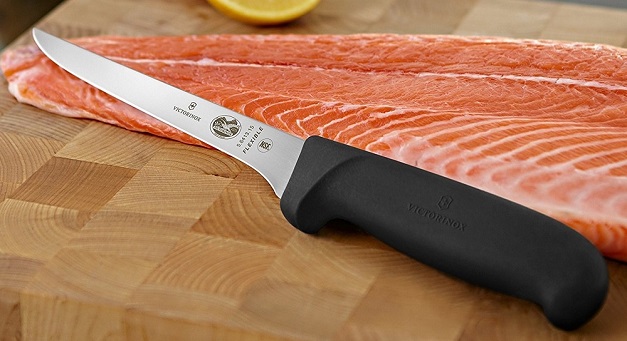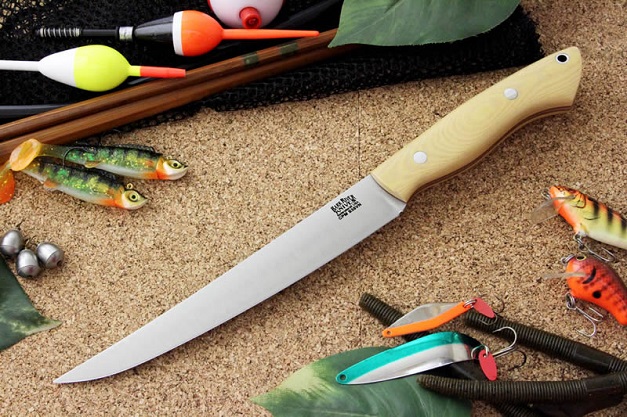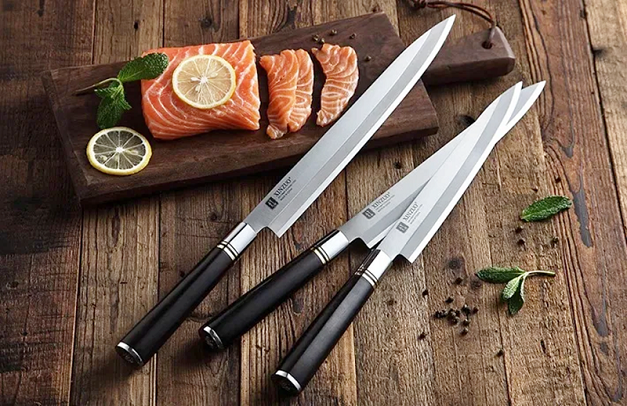Making the Cut: Importance of Fillet Fishing Knives

Source: noblerate.com
Having the right tools for fishing is a necessity no matter if that is catching fish or cutting up the meat. Whilst fishing in itself is an activity that requires patience and timing, the process that comes afterwards isn’t as time-consuming luckily. Preparing fish for cooking is a straightforward process that can be easily done with the right fillet fish knife.
Whilst you can use any fillet knife with other types of meat such as beef and poultry, you need to get a quality fishing knife specifically. This type of knife has a thin and flexible blade which is also short and narrow. The blade of a fish fillet knife provides you with the perfect mix of precision, control, and manoeuvrability. With it, you’re able to remove fins, skin, bones and entrails with ease.
Do You Need a Knife for Fishing?

Source: pinterest.com.au
Although many might not consider it to be part of the most important fishing supplies, eventually, you’ll discover that a good fillet knife can make the whole experience much easier and more enjoyable. Every fisherman, experienced or new to the sport needs a good quality fishing knife for prepping their catch, as well as to help in quick-thinking situations. Here’s what to consider in order to make the right pick.
Important Features of Fillet Fishing Knives

Source: leisureandme.com
Handle
The material of the handle can affect how you use a fishing knife. There are usually three types of materials used to make the handle of a fishing fillet knife, wood, laminate, and plastic. Wood is a material that’s been in use the most and it makes for a good feel in your hands. But you must remember that it tends to hold onto more bacteria and it is nor as durable as the other two.
Plastic handles are known as user-friendly since they are easy to maintain and lightweight too. Plastic handles may crack easily with wear especially when exposed to high temperatures. Laminate handles are a good middle ground between wooden and plastic handles. They might look like wooden handles but they are easy to maintain and are extremely durable too.
Blade Flex & Hardness
The flex and hardness of the blade are driving forces in how the knife is able to make the cuts. More flexible blades allow the knife to be more versatile but too much flexibility can make manoeuvrability suffer. The hardness of a blade plays a role in manoeuvrability too but too much of it can make the knife tough to control. You need to a fish fillet knife with a good balance of blade hardness and flex.
Blade Length
The length of the blade is divided into three categories short, medium, and long. Short blades are easy to control and perfect for small species such as sunfish and crappies. Medium-sized, blades are best for larger fish as they range between 17 and 19 cm long. Long blades give you even greater control when preparing the largest of fish but they are not as good of an option when carrying them.
Style
When it comes to the style of a fish fillet knife there are two of which you can choose, German and Japanese style knives. German or also known as Scandinavian style fillet fishing knives have a double-bevelled blade which is usually heavier and thicker than a Japanese style knife. German-style fillet knives have a larger angle on the blade and they are better for chopping or rocking style. The steel of these fillet knives is usually softer.
Japanese style knives are lighter since they have a thinner blade and they also have a single-bevelled blade. The harder steel has a lesser angle on the blade which is also suited for chopping but also for making clean-cut slices. Japanese style knives are meant to be used for more delicate cutting while German ones are meant for straightforward filleting.
Sheath
While the sheath might seem as non-important but infect it is quite important especially for the blade. You won’t just use your fillet knife at home and when carrying it you want something to protect the blade. A sheath is exactly what you need which is available in different materials. These include nylon, leather, and plastic. Leather is deemed as the perfect sheath material since its easy on the blade and highly durable. One downside of a leather sheath is that it needs to be treated regularly so it lasts a long time.
Plastic sheaths are the most affordable but not as easy on the blade as leather sheaths. Their solid build can actually affect the blade in a negative way and they can break under strong impact. Nylon is the alternative to leather sheaths since it is flexible enough to not affect the sharpness of the blade whilst being durable too. While not as classy looking like leather, nylon is a solid option for those of you who want leather but don’t like to spend as much for it.



